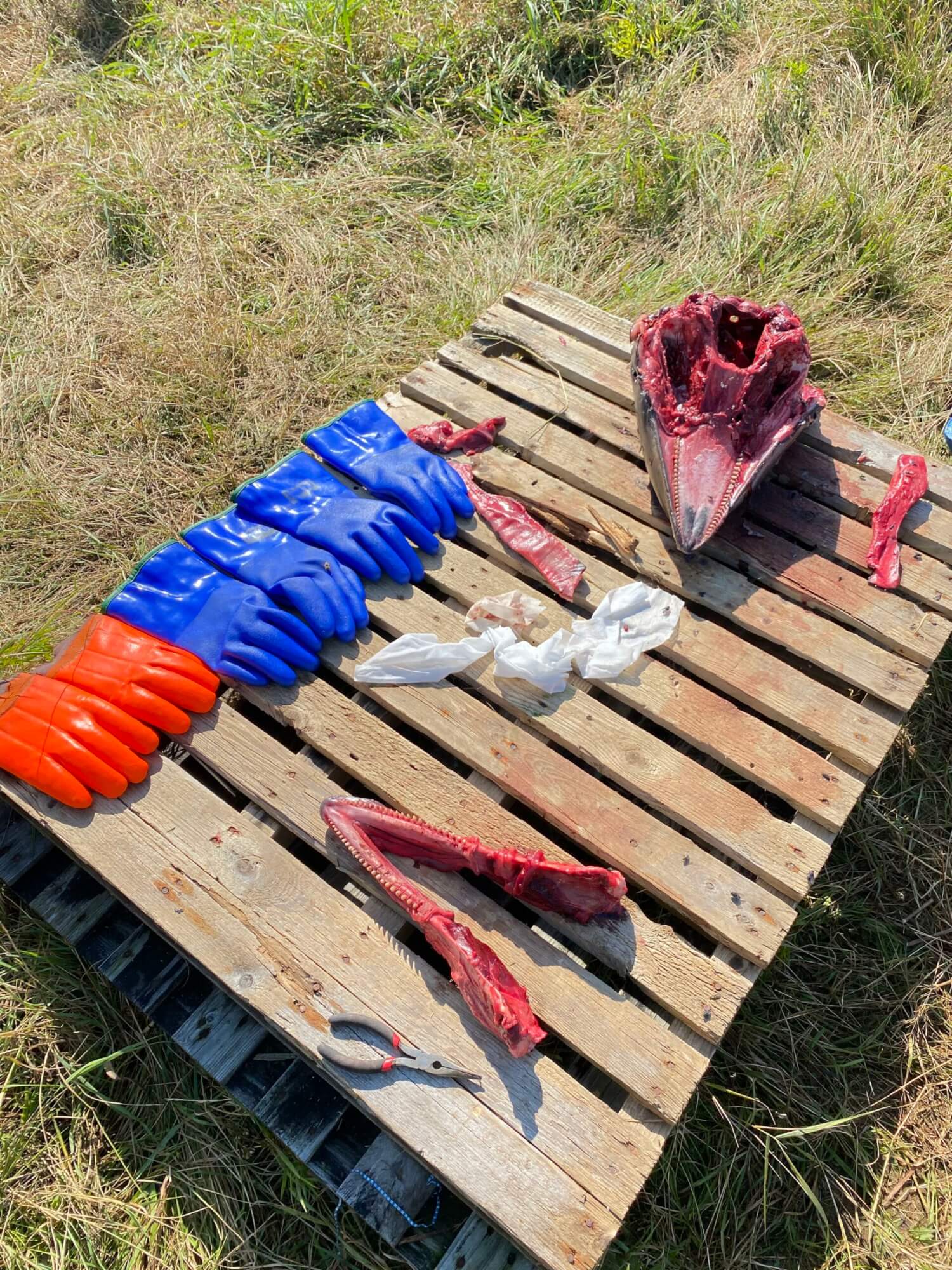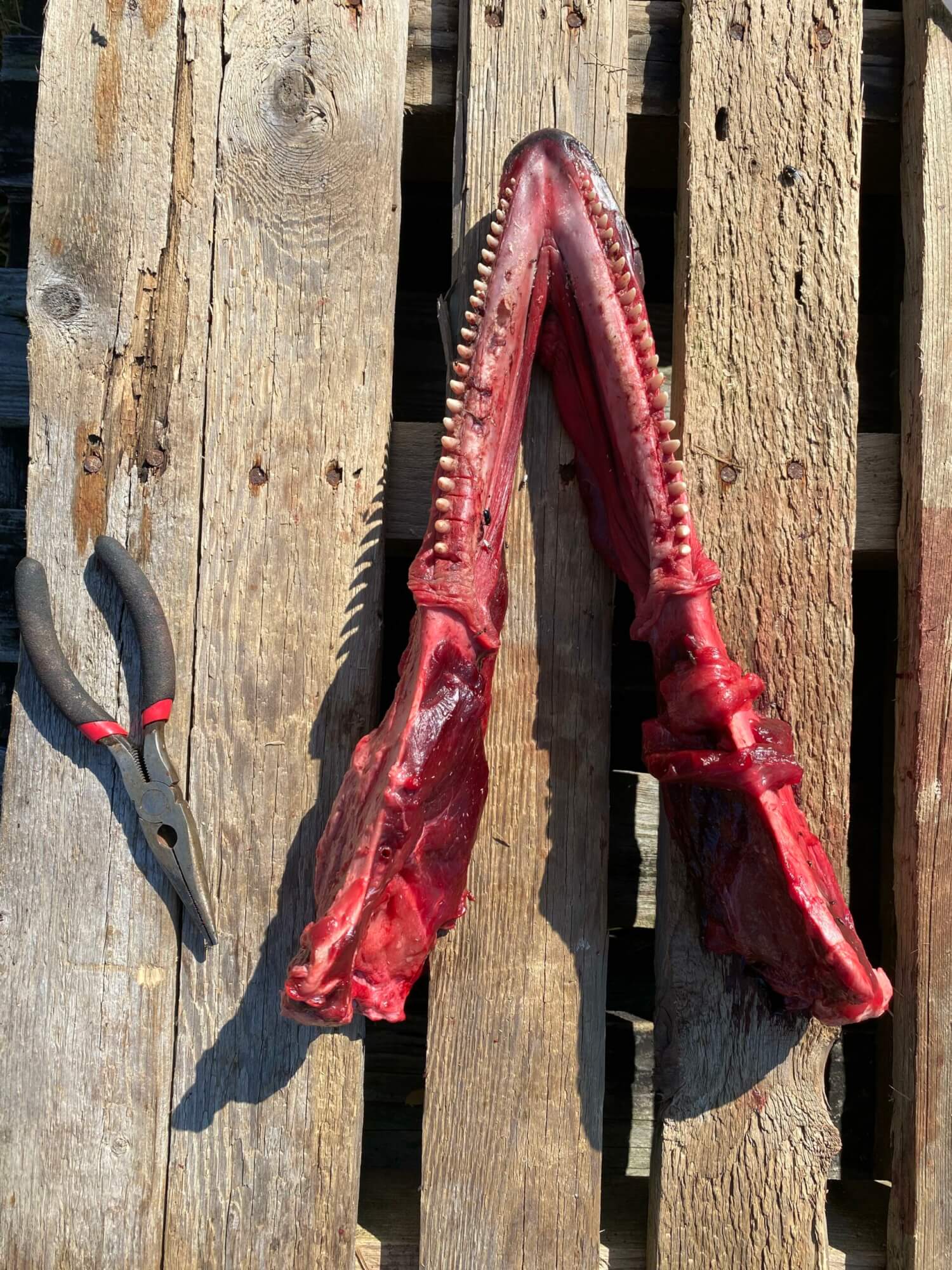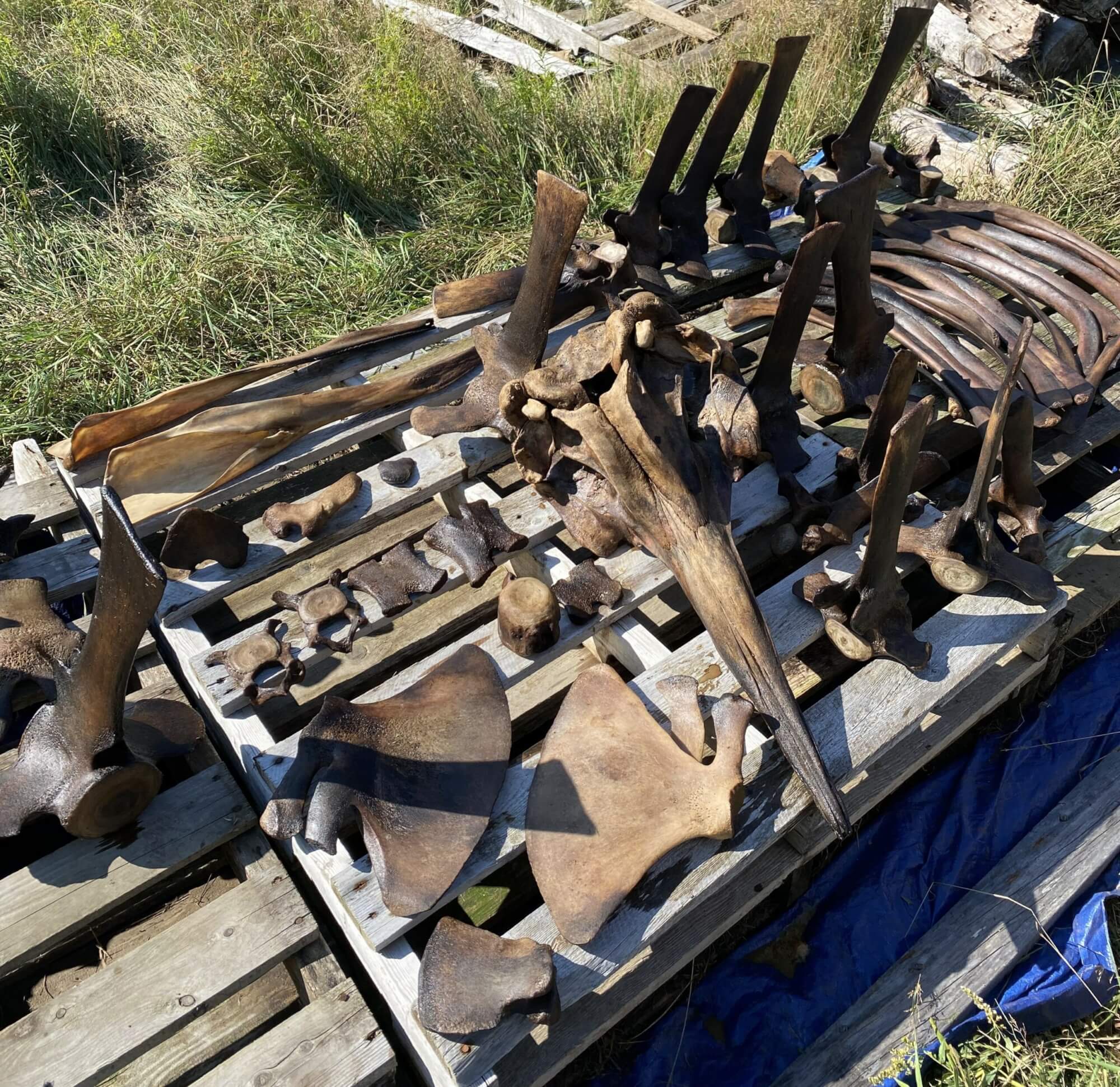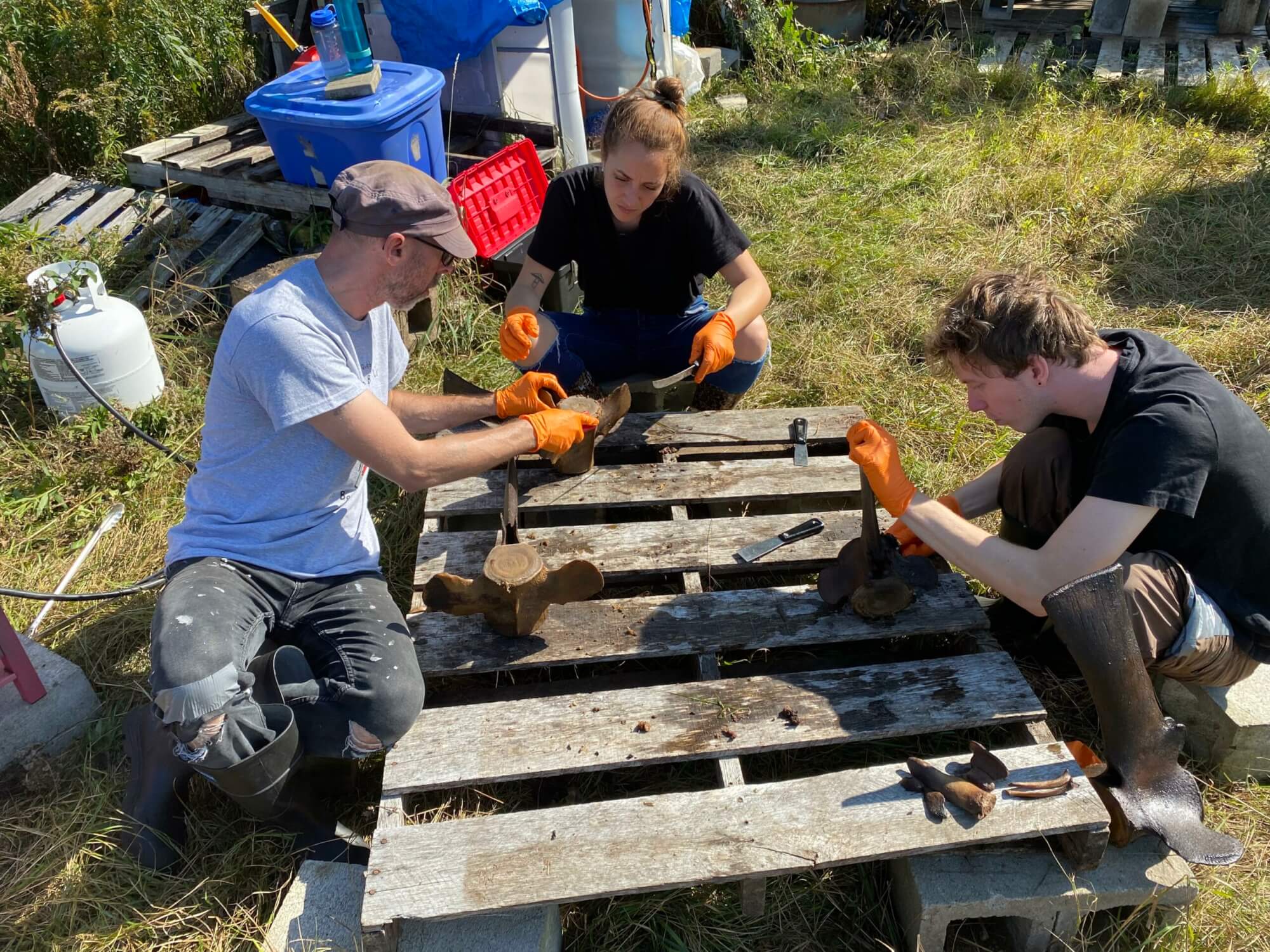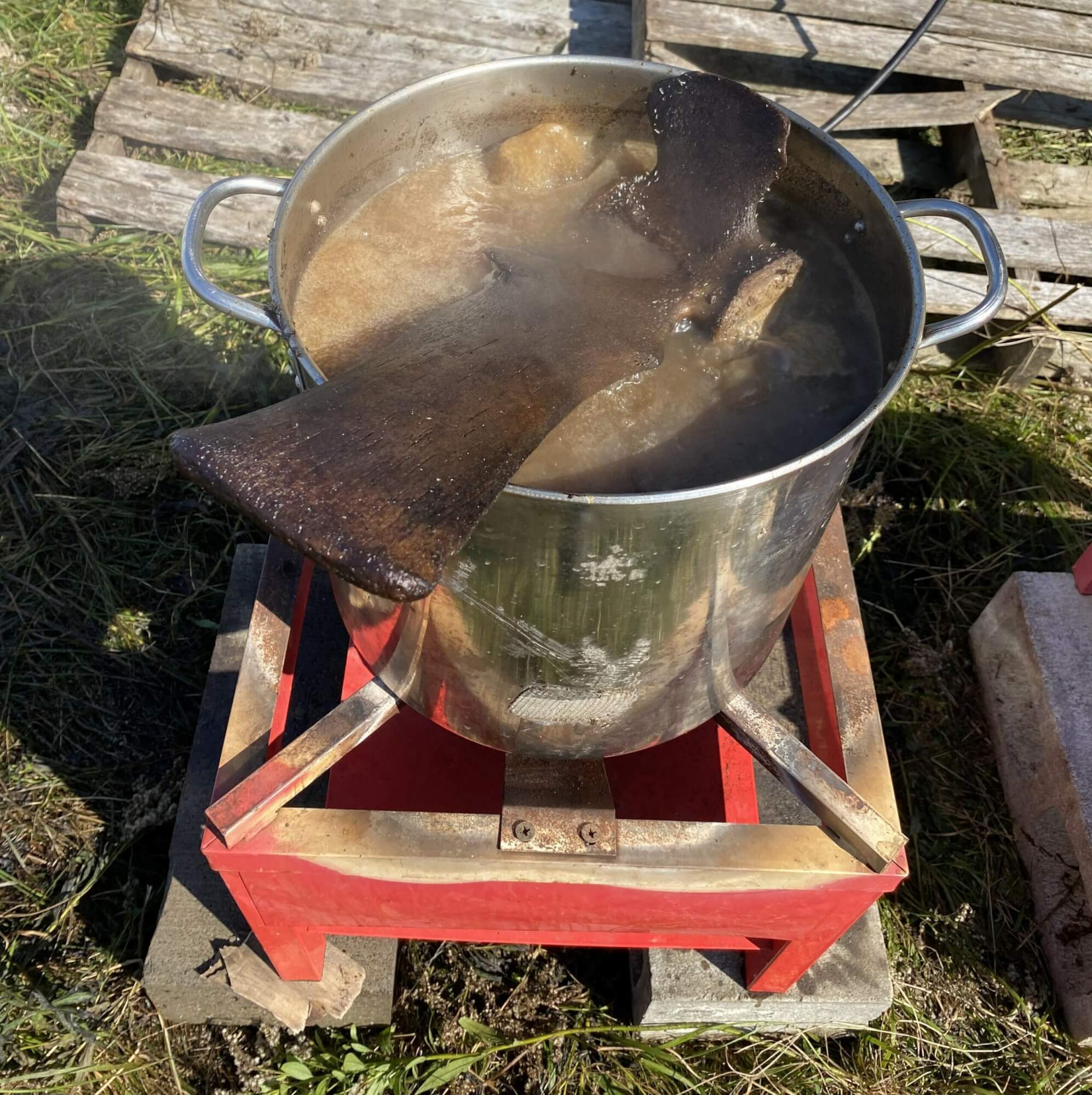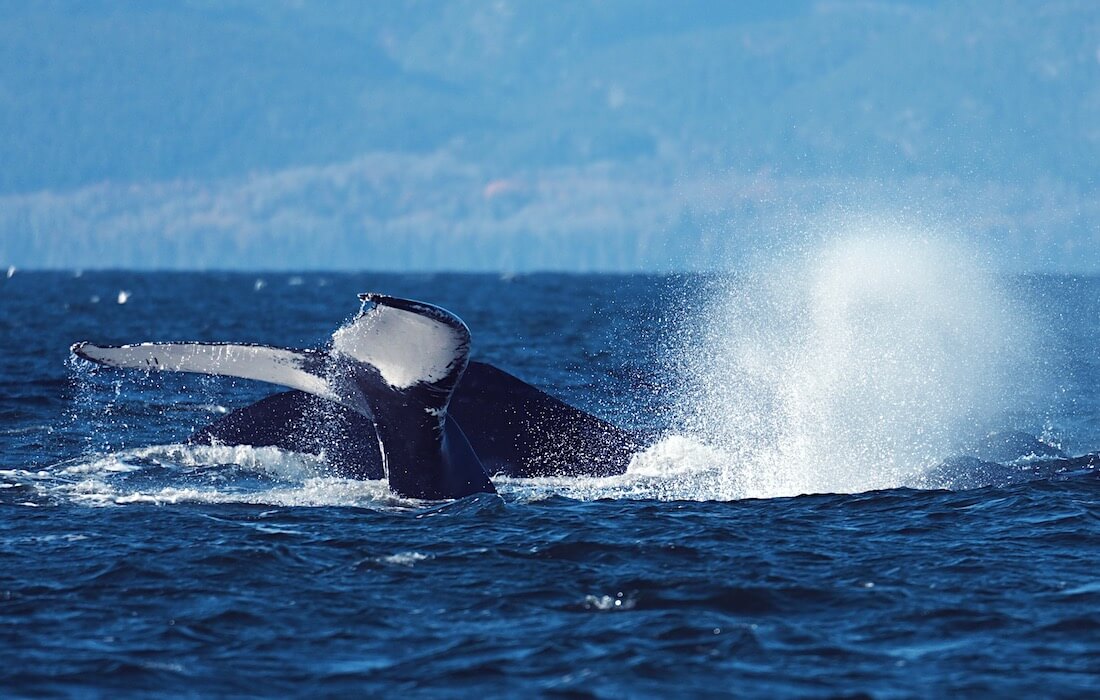Friday morning, September 22, 2023.
Warning: Not for the faint of heart!
I wake up shortly after dawn. The golden light fell gently on birds perched high, like the soft kiss of a mother waking her slumbering children. I head toward the Marine Mammal Interpretation Centre (CIMM) for the start of this most unique adventure. I’m expected by two colleagues as well as Michel, our leader for the day. My eyelids seem defective this morning, stubbornly submitting to the laws of gravity. We take our place aboard our boat and head toward the “Cinq Étoiles” farm, where Michel carries out his cryptic work. Fear not, despite its slightly gory nature, this story is no Hollywood thriller!
We arrive at the site, a vast area covered with grass yellowed by the sun. I’m instantly transported to the distant past, when paleontology was in its heyday and leading to revolutionary discoveries for science. I find myself wondering about the true nature of the vehicle in which we travelled and imagine the famous DeLorean time machine developed by the eccentric “Doc” from the Back to the Future trilogy. The sky is clear, but a certain mist floats in the air, adding a mysterious aura to the scene unfolding before our eyes.
Michel motions for us to approach the facilities. A white canvas tarp protects from the elements what remains of a True’s beaked whale, a toothed cetacean named after American mammalogist Frederick William True, cetologist and describer of the species in 1913. It was at this moment that my imagination went wild, ready to make me relive a piece of history, but unfortunately I didn’t have the time to let my creative impulse carry me any further. A foul odour emanating from a rotting delphinid carcass suddenly pulls me out of my daydreaming, like someone might snatch up a toddler that has ventured too close to the churning waters of a raging river. The stench reminds me just how wild nature is, but it doesn’t stop me.
Leaning over a large plastic tank, Michel presents its contents to us: the remains of a white-beaked dolphin, cut into several pieces. A somewhat gruesome image, I admit, but what follows is equally as lurid: we would have to dismember its head in order to be able to extract all its little teeth using a pair of pliers. That’s right! All the pieces of the puzzle must be carefully recovered if we want a faithful reconstruction of the species. Like the beaked whale, this dolphin’s skeleton will probably end up in the CIMM museum. Its mortality was not in vain, as the carcass is now being used for educational purposes.
As the head is still slightly frozen, we have to wait before we can begin our work. Rising higher and higher in the sky, the sun doesn’t take long to do its job and soften up the carcass. The flies begin to swarm with increasing intensity, each one determined to get its fair share of the pie. We must act quickly. Equipped with our arsenal of destruction, we try as best we can to remove pieces of flesh from the animal to enhance our visibility and make our job that much easier. Once we dislocate the jaw, we can finally settle into our roles as dentists. I grip my pliers tightly, ready to go to work. My inspiration fades the moment I grip a tooth and start yanking. Well anchored to the bone, it was practically impossible to extract. We each take turns trying to make the teeth bend to our will, but to no avail. Faced with such tenacity, we decide to tackle another task.
The bones of the beaked whale are spread out before us, an intricate mosaic of massive vertebrae, thick ribs and hefty skulls. My mission is clear: to rid these bones of the flesh that covers them. Michel explains to us that the bones must be boiled in order to soften the flesh and thus make our task easier.
Once the bones have softened, I grab my knife, its edge gleaming in the midday sun, and begin to scrape the first vertebra. Even after it has been boiled, the flesh adheres firmly to the bones. Despite the unbearable smell, we manage to complete this long-term project that other colleagues of ours began earlier in the week.
Les différentes étapes
Striving to restore these bones to their former glory, Michel details the stages of the long process of reconstructing a whale skeleton. First, a report must be submitted to the Quebec Marine Mammal Emergency Response Network (QMMERN). Whenever a carcass is reported, QMMERN contacts the Marine Mammal Interpretation Centre (CIMM) so that it can determine whether the species discovered is appropriate for its museum. If the answer is positive, the animal is transported to the farm in a container truck. This stage is sometimes preceded by a necropsy, the equivalent of an autopsy for a dead animal.
Then, after most of the animal’s flesh is removed, the bones take their first bath in an enormous vat of hot water. They will macerate for a while in this thick soup that will soon take on a most unappealing appearance. Once all the flesh is removed from the skeleton, it’s time for a second soak. This is the degreasing stage, which must be carried out in lukewarm water at a fairly low temperature. The final soak, this time in hydrogen peroxide, aims to restore the bones to their original colour and kill bacteria. The skeleton is then rinsed with cold water and dried before being checked over one last time. Do the bones appear to be properly degreased? Are they in good condition? Finally, with the help of a few references on the subject but mainly drawing from experience, the skeleton is assembled on the premises of the CIMM. This is a fairly tricky step and Michel jokingly shares with us the many assembly errors that have been made at museums around the world.
Un trésor oublié
We leave the site in the late afternoon under a blazing sun that conjures up contradictory feelings in me. The unexpected joy of enjoying this warmth so late in the season on the North Shore clashes with a persistent anxiety about the unpredictable consequences of climate change. My mind wanders for a few more moments before I come back to my senses, the work that has just been accomplished, and the skeleton of this noble creature that will soon be put on display at CIMM’s museum. I then feel replete with a certain form of satisfaction, a feeling of having contributed to the restoration and enhancement of a genuine forgotten treasure, as if I were a modern-day paleontologist…




